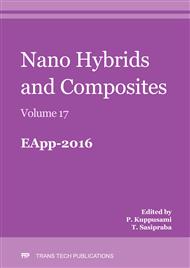p.88
p.96
p.101
p.106
p.113
p.121
p.127
p.131
p.140
A Study on Composition Dependent Electrocatalytic Behaviour of Electrodeposited Ni-Mo Alloy
Abstract:
In the present work, efficient electrode material for water splitting reaction has been developed through electrodeposition method. The nanocrystalline Ni-Mo alloy coatings were deposited at different cathode current densities (c.d.) on copper substrate. The electrocatalytic activity of the electrodeposits for hydrogen evolution reaction (HER) and oxygen evolution reaction (OER) in 1.0 M KOH were evaluated by electrochemical techniques like cyclic voltammetry (CV) and chronopotentiometry (CP). The corrosion stability of the Ni-Mo alloys was tested in same alkaline medium by potentiodynamic polarization study. The experiment results demonstrated thatNi-Mo alloy deposited, respectively at 1.0 A dm-2 (38.3 wt.% Mo) and 4.0 A dm-2 (33.2 wt.% Mo) are good electrode materials for HER and OER. Further, Ni-Mo alloy deposited at 4.0 A dm-2 was found to be most corrosion resistant in the alkaline medium. The electrocatalytic activity of Ni-Mo alloys were explained in terms of their surface morphology, phase structure and chemical composition, confirmed by XRD, SEM and EDX analysis.
Info:
Periodical:
Pages:
113-120
Citation:
Online since:
August 2017
Authors:
Keywords:
Price:
Сopyright:
© 2017 Trans Tech Publications Ltd. All Rights Reserved
Share:
Citation:


